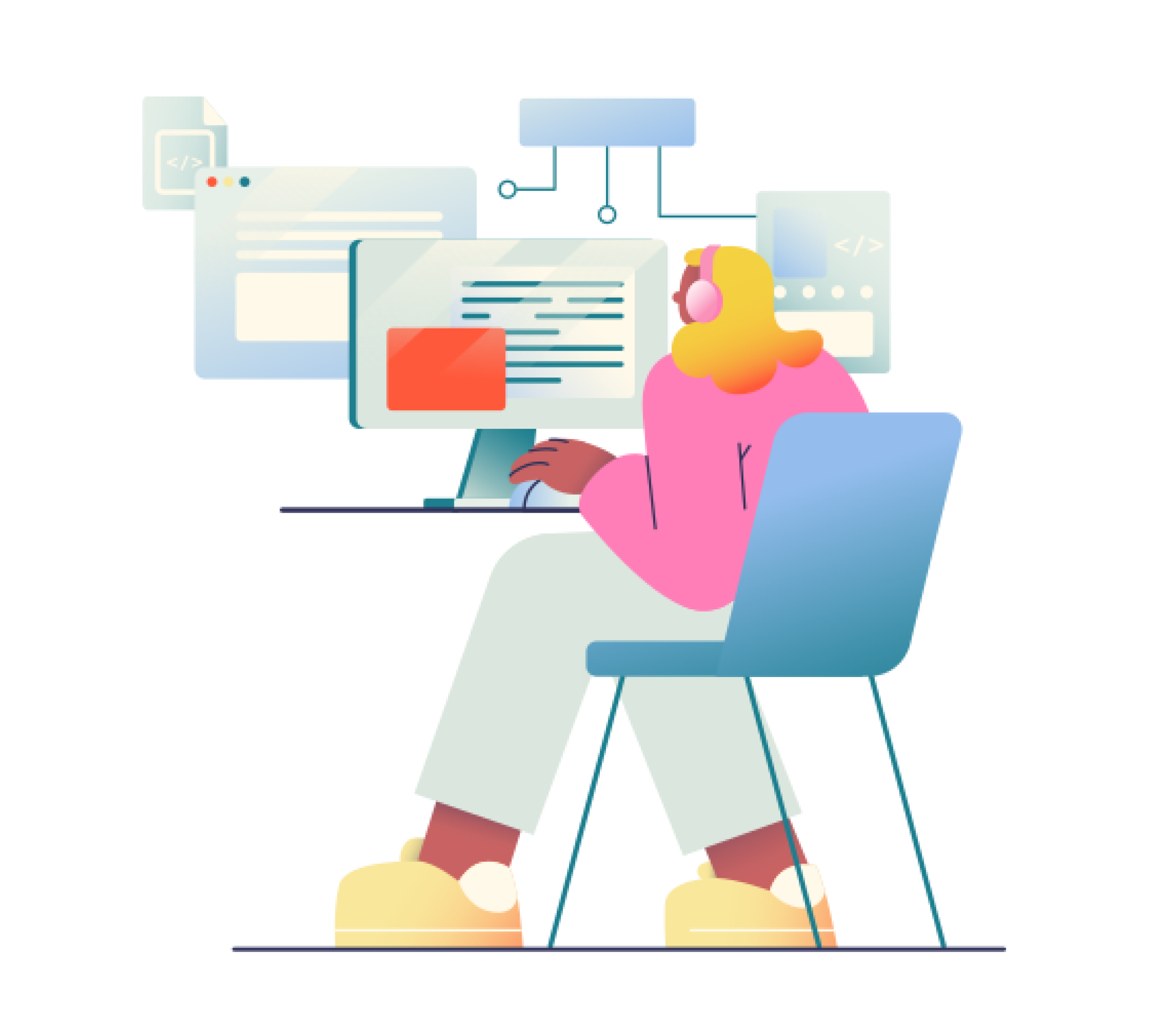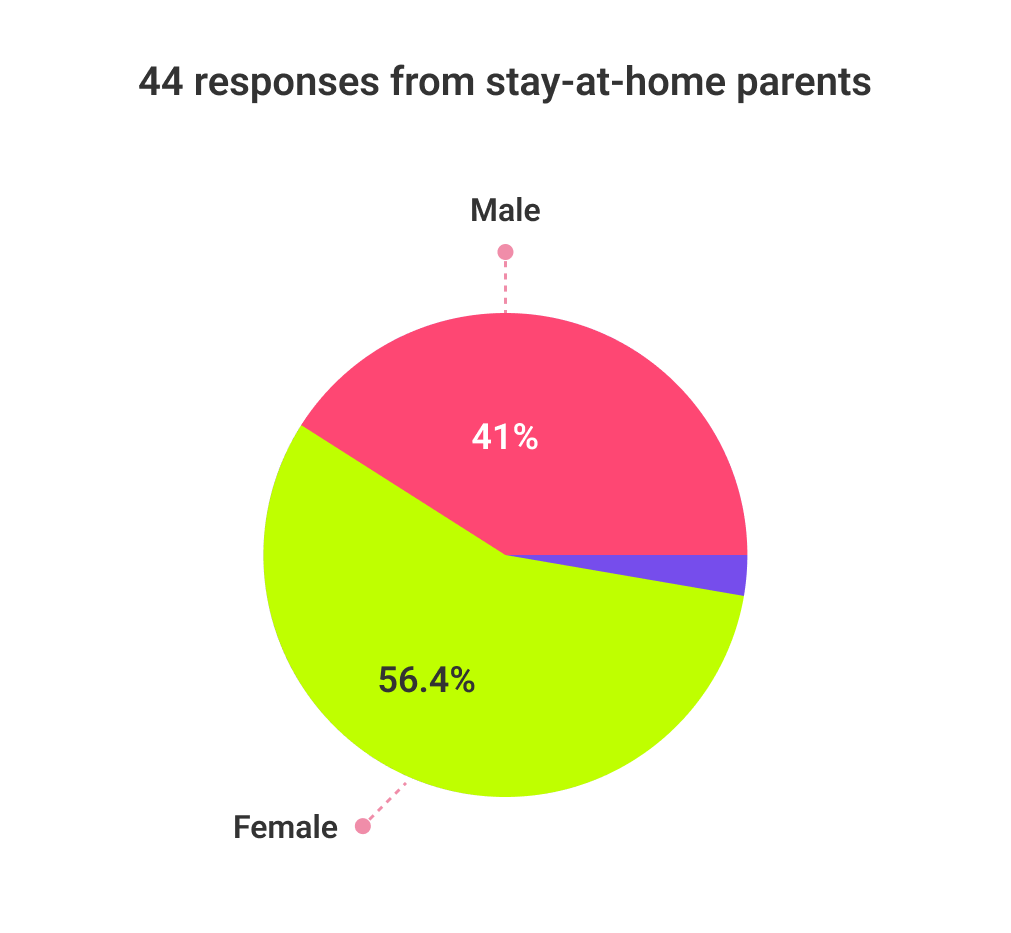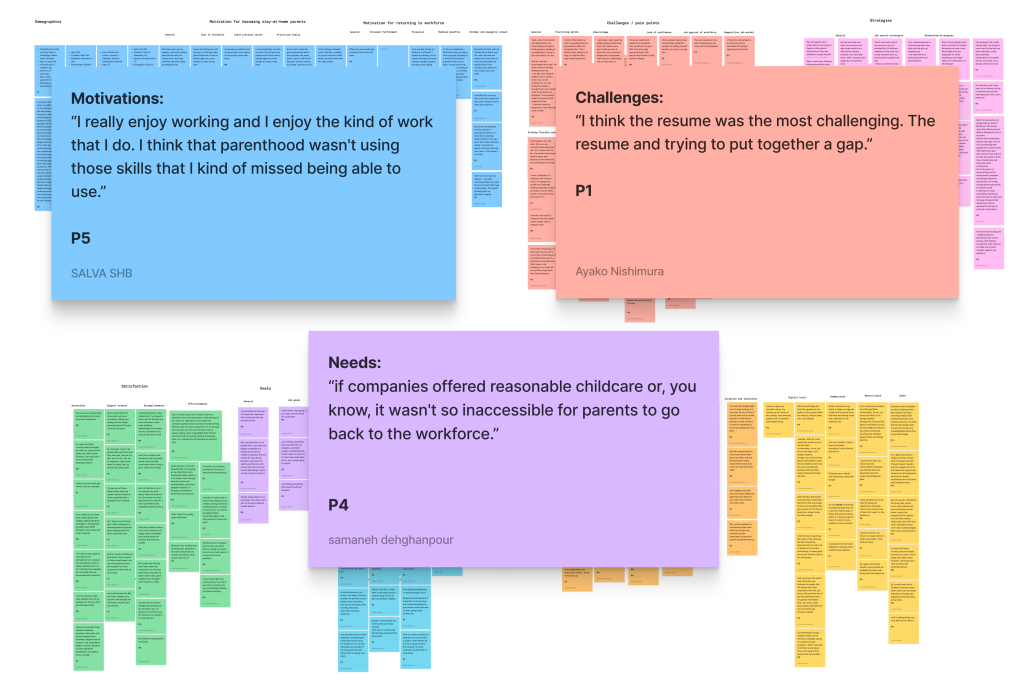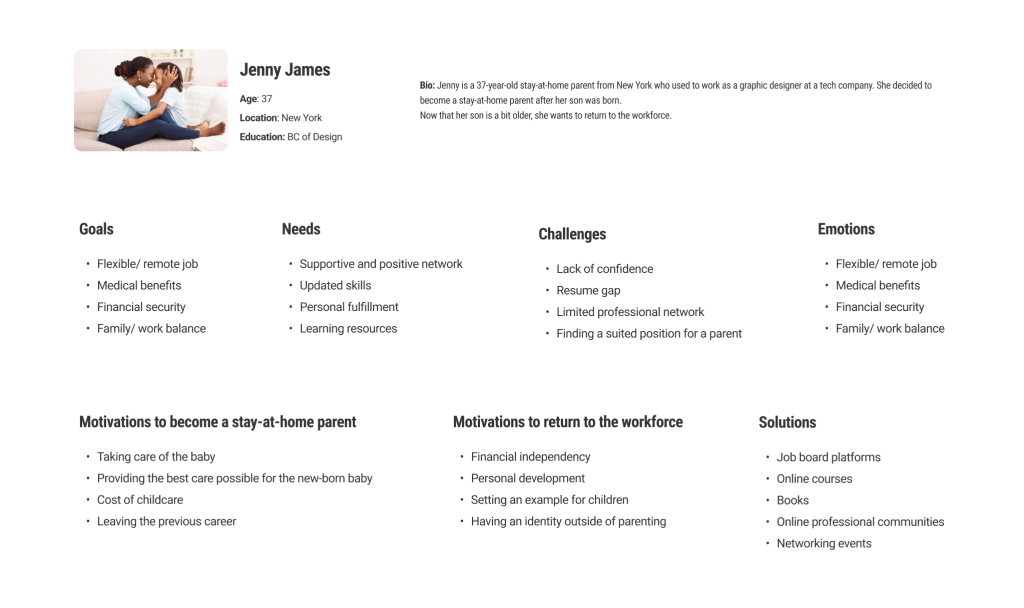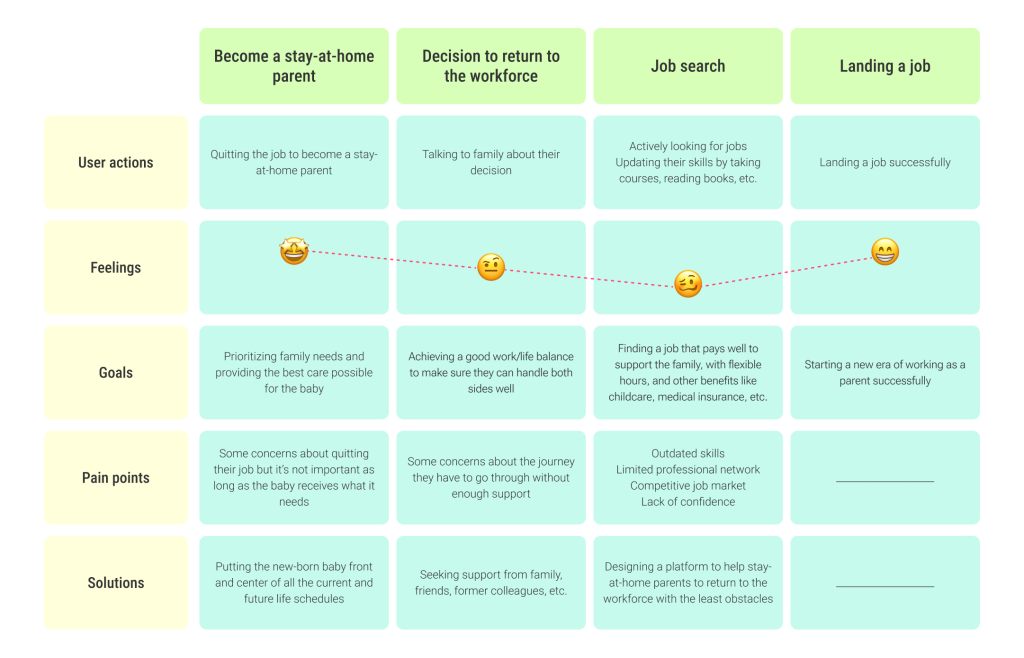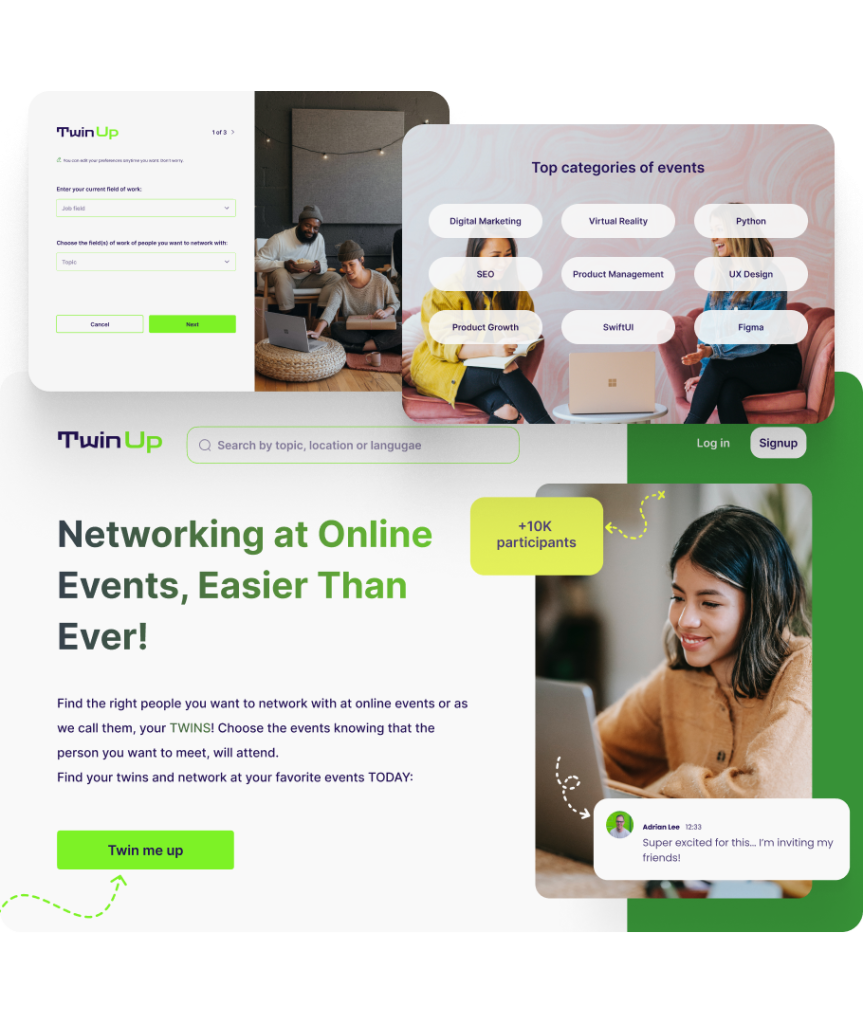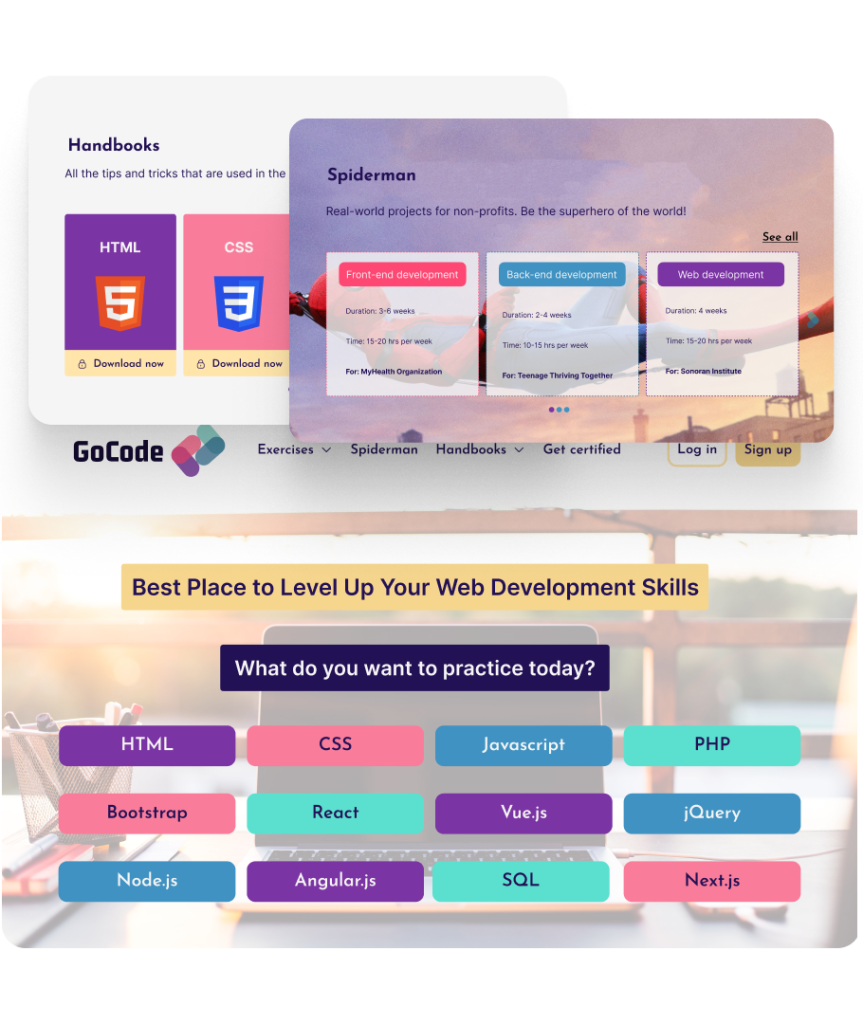Career Coaching Platform
Career coaching platform for stay-at-home parents
UX research ▪ Volunteer ▪ Tech Fleet Company
Challenge
How might we help stay-at-home parents return to the workforce conveniently?
Role
UX research apprentice
Stakeholders
- Client (1)
- Product strategy team (6)
- UX full-cycle team (6)
Tools
- Figma
- UserBit
- Google suite
- Zoom
Deliverables
- Qualitative research insights
- Quantitative research insights
- Competitive assessment
- Product roadmap
Timeline
July 2023

